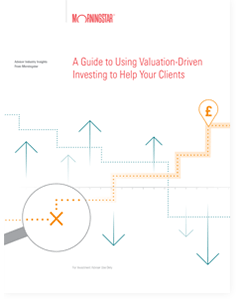“The trick in investing is just to sit there and watch pitch after pitch go by and wait for the one right in your sweet spot. And if people are yelling, ‘Swing, you bum!,’ ignore them.” — Warren Buffett
In Australia, we don’t tend to watch a lot of baseball, but we do watch a lot of cricket and rugby. These sports share a lot in common with baseball and American football, respectively. In fact, the Warren Buffett quote above is as pertinent to the cricket batsman as it is to the baseball hitter.
Like Buffett, we’ve been letting a lot of pitches pass us by lately. In fact, for more than a year we’ve gradually moved to more defensive positions in our multi-asset portfolios, moving away from overpriced equities. Many of the traditional places that an Australian investor might invest, such as Australian and U.S. equities, offer low expected returns and a high risk of loss.
Why Aren’t We Swinging?
Defensive may be a somewhat confusing term because it’s often used in a top-down context: Another manager may believe an environment is “risk-off” or will, through some macro thinking and analysis, decide that markets are near the end of a cycle; these decisions lead to lower-risk positions in the portfolio. However, we reach defensive positioning as a natural result of our bottom-up, risk-averse, valuation-driven investment process. This leads us to reject overpriced assets, one by one, and retreat to lower-risk investments and the odd attractively-priced riskier asset.
Therefore, we are defensive because, as valuation-driven investors, we believe the prospective returns of riskier asset classes at present won’t compensate investors sufficiently. In other words, we doubt the return is worth the risk today relative to history, because for us being more defensive entails avoiding the risk of the permanent loss of capital and maintaining flexibility to take advantage of future opportunities.
We recognise that, as in 2017, overpriced stocks may continue to rally. But we’re happy to sit out those opportunities for near-term returns because we see the drawdown risk as being too great. As asset prices rise from overheated levels, the incremental returns become riskier and riskier. If the true risk to investors is the permanent loss of capital (as we believe it is), then overpaying for assets is a good way to take on a lot of unrewarded risk.
Low Interest Rates Complicate Valuations
This investment cycle, stretching back to just after the global financial crisis, has been unusual for several reasons, chief amongst them being exceptionally low interest rates. Loose monetary policy did not make investors less risk-averse, but it did push many investors further out on the risk spectrum.
Low U.S rates complicate valuations. Markets tend to be good at pricing current conditions, but less effective at pricing conditions yet to come. Thus, low interest rates argue for higher multiples on stocks, but only while rates are low. Given that rate rises seem probable, the future looks less sanguine for stocks.
The Upside of Being Defensive
We’re generally not happy to be underweight stocks and to be holding so much cash, as cash has generally been a less appealing long-term investment across many countries over the last 117 years.
However, in today’s environment we hold more cash than normal for two reasons:
- It’s arguably the best store of value over the short term across both rising inflation or falling growth scenarios.
- Perhaps more importantly, cash can be quickly converted into financial assets. We want to be prepared to buy underpriced assets, whenever they appear, and not worry about being unable to sell other investments when the time comes.
As such, we’ve moved to more defensive asset allocation weightings in most portfolios and have moved away from many riskier sub-asset classes. We’ve increased the weighting of quality stocks, or those we believe have more stable cash flows, because we think they would offer somewhat better downside protection compared to the broad market relative to the price of assets in general. This partly offsets the risks from the more cyclical equity exposures.
We Haven’t Stopped Watching Pitches
Watching pitches go by takes considerable discipline—it’s not easy. However, we believe this is where our strength lies. As an active investor, it is important to understand where your advantage comes from, and we believe ours are analytical, organisational, and behavioural.
We tend to see the best opportunities when most investors are selling, because they must sell or because they cannot deal with the psychological pain of losses or the underperformance of holding the investments.
So, by sticking to our investment philosophy and to our best investment ideas we believe we will help those we serve in the long run by taking advantage of underpriced opportunities while guarding against possible losses. After all, whatever the sport, what matters isn’t balls and strikes but the score at the end of the game.

 Morningstar
Morningstar



